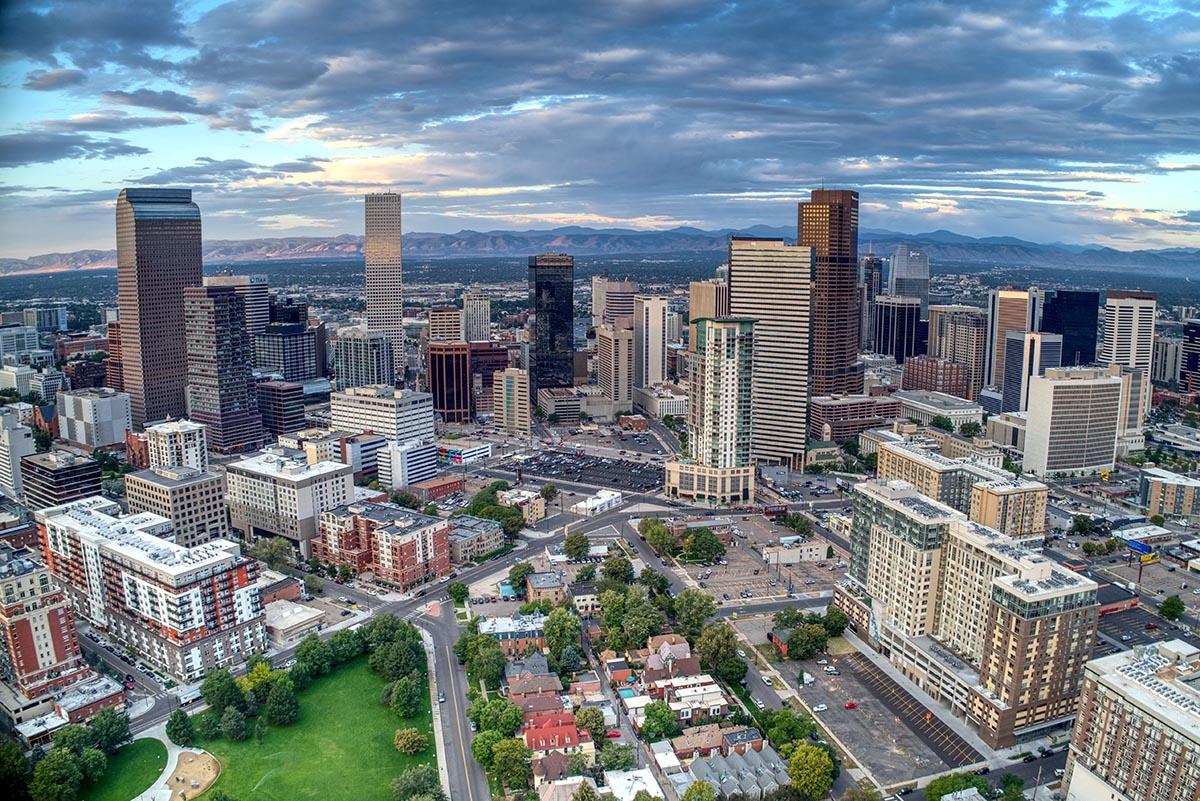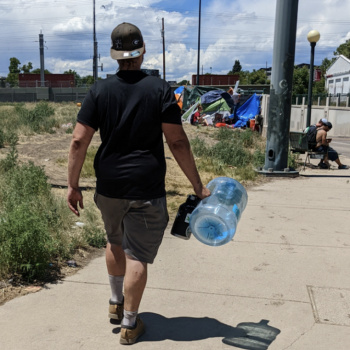Researchers call attention to lack of water, toilet facilities for the unhoused

On a warm summer day in July, Hannah Higgins (MA ’23) strolled the 16th Street Mall in downtown Denver in search of something. Despite the mall’s consumer-driven aura, she wasn’t there to shop. She was there to document. And at the very end of 16th Street, she found what she was looking for—a public water fountain and restroom.
Higgins, along with other students and faculty from the University of Denver and Regis University, worked in collaboration with the Housekeys Action Network of Denver (HAND) to conduct a study that examined access to water and toilet facilities for the unhoused in the city. Lack of access to safe and reliable water, sanitation and hygiene is known as WASH insecurity, a crucial component of adequate housing.
Renee Botta, an associate professor of global health and development communication in the College of Arts, Humanities and Social Sciences, has been exploring this phenomenon for decades, specifically in Africa. And when the coronavirus pandemic canceled her trip there in 2021, she began to ruminate on WASH insecurity among the unhoused community in Denver.
Over the next two years, Botta and Emily Van Houweling, a professor at Regis University, and their students conducted 193 surveys and five focus groups. The results were clear: For those experiencing homelessness, finding a water fountain or using a public restroom can be a challenging 11-12-minute task.
They mapped 271 publicly available water fountains and toilets in the city, an area that encompasses 159 square miles. By foot and on bikes, students documented the conditions of these water fountains and toilets, including cleanliness, ADA accessibility, running water, hours open, seasonal closures and security restrictions.
According to the report, 49% of all park toilets were seasonal and closed from October through April. Toilets in public buildings often require security screenings to enter, which often makes the unhoused feel too uncomfortable to use them.
As one unhoused person told the researchers, “Finding a reliable, consistent source of water is impossible, and then when I do have access to a spigot, I almost get the cops called on me for just trying to access water and survive.”
“Not having a place to go feels disgusting, like [I am] an animal,” said another unhoused person.
And when a person can find an accessible bathroom, there’s no guarantee that it will be a safe experience, especially for women and members of the LGBTQ community.
“[We talked to] a few who had been assaulted in porta potties. Many needed someone who appeared to be strong to accompany them to toilets in the evening. They feared someone would attack them. There aren’t safe places for people to go to the bathroom,” Higgins says.
The report also detailed the effects of WASH insecurity on public health, specifically the health of the unhoused, which is something Botta says is often left out of the conversation.
“One of the things that people talk about when they talk about encampments is that it’s unhealthy for public health,” Botta says. “They’re talking about you and I—they’re not talking about [the unhoused], as if they’re not part of the public. They are part of the public. Public health is their health, too, right?”
According to the report, 28% of the unhoused surveyed reported a physical health challenge related to poor access to WASH services, including skin infections, urinary tract infections, bladder infections, stomach issues and hepatitis A.
“I get yeast infections from holding it so much,” says an unhoused person. “I have never felt so much pain in my life.”
While housed folks have certainly felt the pain of not being able to find a restroom, the experience is not the same as that of the unhoused.
“I can walk into any Starbucks I want and use the bathroom,” Botta says. “They cannot. Unless, for some reason, they managed to have a ‘look’ about them.”
In their final report, Botta and Van Houweling make several recommendations. They are advocating for increasing access to bathrooms and water fountains, improving maintenance at existing facilities, keeping the water fountains and toilets open all year, getting businesses involved, changing the social stigma around the unhoused, testing and protecting water quality, and putting up maps and signage to locate and identify bathrooms.
“People say, ‘I don't want them pooping in my yard.’ And it's like, well, then provide toilets. Go to the city and tell them,” Botta says.








